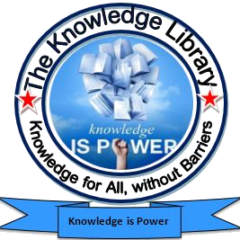| Bacteria | Virus | Fungi | |
| Structure | Most bacteria consist of a ring of DNA surrounded by a cellular machinery, contained within a fatty membrane. | They consist of little more than a small piece of genetic material surrounded by a thin protein coating. Some are also surrounded by a thin and fatty envelop. | A typical fungus consists of the hyphae, which form the fungal body. These hyphae are microscopic walled tubes or filaments that are lined with plasma membrane and contain cytoplasm. |
| Cell membrane | Present below the cell wall | No cell membrane | Present |
| Genetic Material | DNA | DNA or RNA | DNA |
| Size | Medium | Smallest | Largest |
| Type | Intercellular organisms | Intracellular organisms | Either unicellular or multi-cellular. |
| Shape | Come in three different possible shapesCocci = sphere shapeBacilli = rod shapeSpirella = spiral shape | Viruses come in all different shapes.Most common shape is icosahedral, some are helical shaped.
Some viruses are shaped like a space ship. They are called bacteriophages. |
Most fungi come in thread-like strands, called hyphae (collectively called mycelium) |
| Host | Can grow on non-living surfaces | Needs a living host, like a plant or animal | Can live on its own |
| Usefulness | Some are useful | Mostly are harmful | Many fungi are beneficial |
| Antibiotics | Kill bacteria | Cannot kill viruses | Do not effect |
| Diseases Caused | Cholera, tuberculosis, lyme disease, pertussus, salmonella, staph infections, strep throat, leprosy, tetanus, diptheria, E.coli, flesh eating (necrotizing fascitis) rickets, etc. | Flu, colds, HIV/AIDS, hepatitis, west nile, measles, herpes, shingles, chicken pox, monkey pox, polio, smallpox, ebola, and some cancers (epstein-barr) are just a few viruses that affect humans and animals | Allergic, ronchopulmona, aspergillosis, spergilloma, aspergillosis, athlete’s foot, dermatophyte, dermatophytid, dermatophytosis, etc. |
| Source of Energy | Seize energy from the same essential sources as humans, including sugars, proteins, and fats. | Seize materials and energy from host cells by hijacking cellular machinery | They use pre-existing carbon sources in their environment and use the energy from chemical reactions to create the organic compounds they need for energy and growth. |
| Living | Yes | Characteristics of both living and non-living | Yes |
| How they are transmitted | Direct contact with an infected personContaminated food or water (Salmonella, E.coli)Dirty objects (tetanus)Infected animals (rabies) | By direct contact with infected individualsBy contact with contaminated objects (such as toys, doorknobs)By inhalation of virus-laden aerosols. (think sneezes)By animals that act as hosts (vectors) | Transmitted through a number of ways, which include transmission by air and contact. |
| Reproduction | Bacteria reproduce through binary fission, they split into two cells. | Virus injects itself into a living cellProtein coat is discardedHereditary material takes over the cell’s activitiesVirus reproduces and the cell fills
Cell splits open Viruses leave the cell and attack new cells |
Reproduction takes place in multiple ways likeBuddingFragmentationProduction of spores asexually
Production of spores sexually |
| Motility | Move through the environment using a structure known as the flagellum. | Viruses do not have structures and thus cannot move on their own. | Typically, fungi are non-motile organisms. |
Post Views: 27

